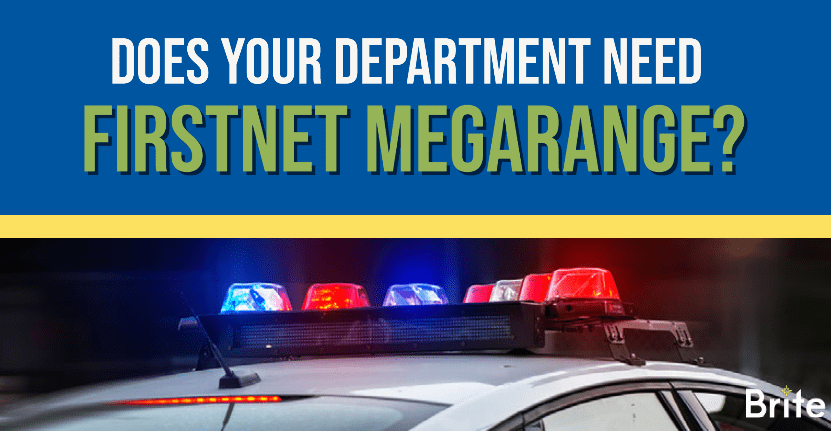Many departments have expanded coverage and increased reliability with help from FirstNet MegaRange. It sounds like a great addition – but does your department really need it? To answer this question you must first fully understand the details of FirstNet MegaRange.
What is FirstNet MegaRange?
Built by AT&T, FirstNet was originally created as a dedicated broadband communications platform for public safety and first responders. While occasionally used commercially, FirstNet’s purpose has pretty much remained the same – to be used for public safety and first responders. By early 2021, new high-power user equipment (HPUE) was created to work on the Band-14 spectrum on the FirstNet platform. The HPUE was dubbed FirstNet MegaRange and it has been making a name for itself by transmitting stronger signals and significantly improving uplink data speeds.
What’s So Great About FirstNet MegaRange?
Why is an HPUE like FirstNet MegaRange needed? It’s because it improves connectivity and throughput of data services to cellular towers. In FirstNet’s case, specifically AT&T cellular towers. What this means is increased reliable connectivity, especially in remote regions or areas that are on the edge of typical signal coverage.
In other words, communication gets better. And better communication means everyone is safer.
Does My Department Need FirstNet MegaRange?
Better coverage and reliability are certainly a strong plus for FirstNet MegaRange. Before jumping on board, take a moment to determine if this HPUE is truly a good fit for your department.
YES
Many departments benefit from FirstNet MegaRange. These are departments that often find themselves on the outskirts of signal coverage in areas such as:
- Remote, rural and tribal regions that are prone to poor connectivity and even blackouts.
- Maritime scenarios for search and rescue marine operations.
- Metropolitan areas or urban canyons where structures are too dense for signals to travel through.
- Building shadows or coverage holes such as tunnels, basements, elevators, stairwells and parking garages.
If your fleet is frequently responding or patrolling in areas such as these, the answer is simple: yes, your department would benefit from FirstNet MegaRange. Improved connectivity results in better communication with dispatchers. This provides safer situational awareness for officers out in the field and quicker backup during tough calls. It offers better treat-in-place medical care and a reduction in the number of hospital visits for ambulance and EMS teams. All this bolsters safety and health for officers, EMS providers and the community.
NO
We’ll be honest with you. Not every department is a good candidate for FirstNet MegaRange. If your fleet does not typically go to areas on the edge of signal coverage resulting in reduced connectivity, chances are your budget could be better spent elsewhere. FirstNet MegaRange is a major investment and unless you’re going to get good use out of it, you will not get a decent return on investment. It is truly meant for departments who suffer regularly from poor connectivity, coverage and reliability. Bottom line, if connectivity isn’t an issue, you don’t need it.
In Conclusion
FirstNet MegaRange increases connectivity and reliability in remote regions or areas that are on the fringe of typical signal coverage. This heightened communication results in an increase in public safety. While many departments benefit from FirstNet MegaRange, it is not suitable for every fleet. Only those who truly need it should make the investment.

